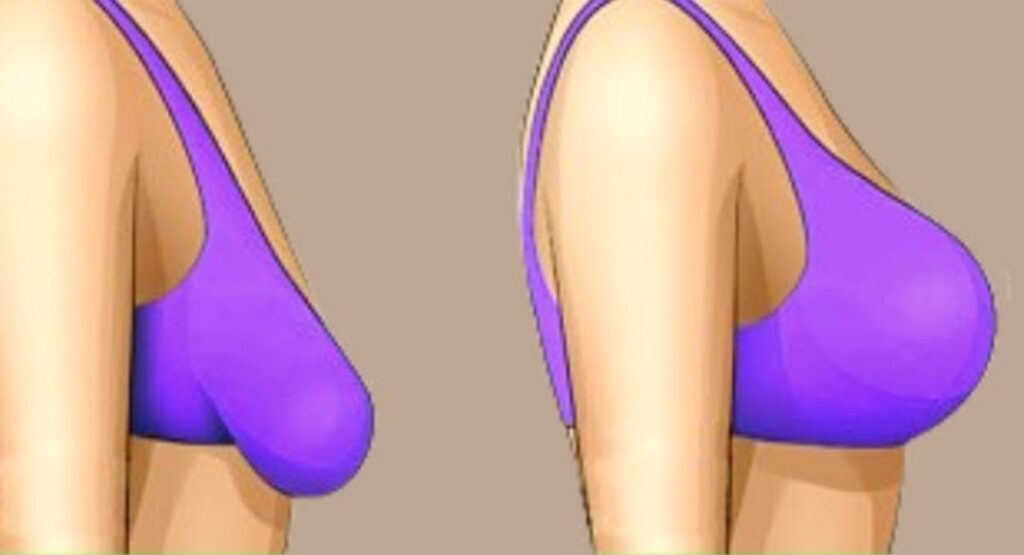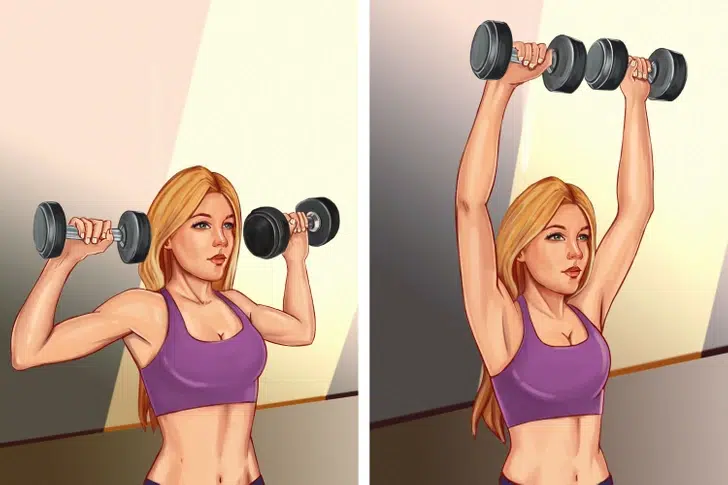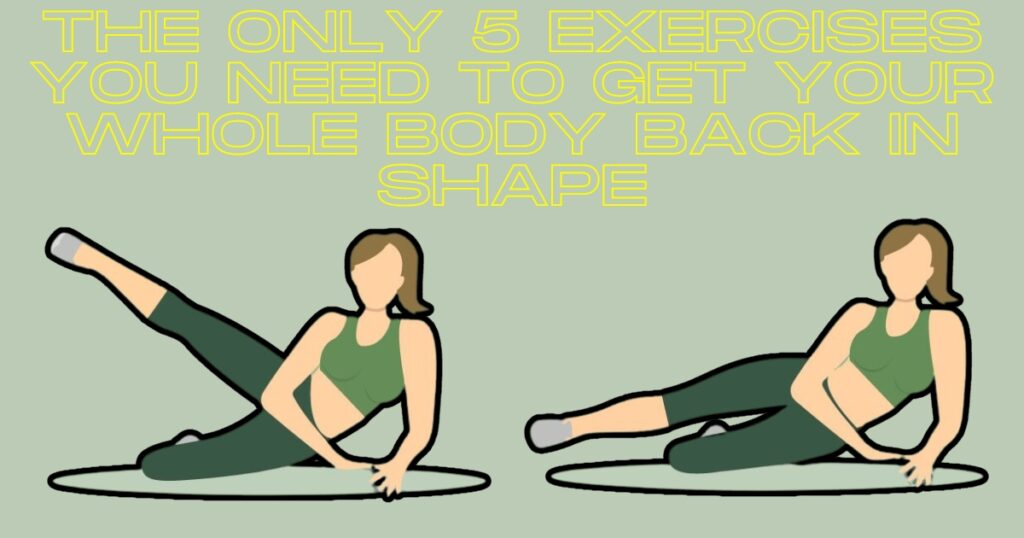Many postural problems are caused by the hours spent each day hunched over a computer at work or driving a car. These yoga poses can help counteract any tendency to slouch as well as increase your body awareness and your core strength, all of which will go a long way towards improving your posture.
How to Improve Your Posture With Pilates
Mountain Pose
:max_bytes(150000):strip_icc():format(webp)/9-tadasana-56f98e5e5f9b5829866f5f15.jpg)
Mountain Pose (Tadasana) looks simple enough. But when done correctly, mountain pose is actually quite complex, because it teaches you to sense when your body is in perfect vertical alignment.2 It takes a lot of practice and correction to be able to do this on your own.
At first, you may overcompensate for a tendency to slouch by pushing the shoulders too far back and sticking out your chest. This is not the point of the pose. Rather, it is to find a neutral position where you are neither leaning forward nor back and you feel symmetrical on either side of your midline.
- Stand with your big toes touching, toes spread, heels separated slightly.
- Contract the muscles on the front of your thighs, raising your kneecaps.
- Rotate your thighs inward, to widen your sit bones.
- Keep a natural curve of your spine.
- Brace your core and stack your shoulder blades in line with your pelvic bones. Your shoulder blades should be drawn down and back.
- Your arms should hang by your sides with a slight bend of the elbows, palms facing forward.
- Keep your neck long and crown rising toward the sky.
- Take 5 to 10 deep breaths while maintaining this position.
Shoulder Opener
With the hands interlaced behind the back, this pose is a great shoulder and chest opener. Regular stretching and yoga exercises can help combat the effects of poor posture.3
- Stand stall with your feet stacked under your hips.
- Join your hands behind your back and scrunch your shoulders up toward your ears to get as much openness in the chest as possible.
- Let the shoulder blades slide down your back as you draw your arms straight.
- Slowly come into a forward bend over your legs while keeping your hands joined to stretch your hamstrings.
- Roll your shoulders toward the middle of your back and extend your arms overhead.
Easy Ways to Get Better Posture
Cat-Cow Stretch
:max_bytes(150000):strip_icc():format(webp)/1-catcow-56f94bb35f9b5829866e2c25.jpg)
The Cat-Cow Stretch (Chakravakrasana) is excellent for helping you discover the ideal, natural curves of your spine. By moving the spine from flexion (cat) into extension (cow), passing through the middle each time, you learn to judge the neutral position more accurately.
Yoga movements such as cat-cow, have been shown to help increase spinal flexibility and mobility and are recommended for improving quality of life.4
- Begin on hands and knees with your wrists stacked underneath your shoulders and your knees underneath your hips.
- Maintain a neutral spine position with your neck long, gazing down and out.
- Curl your toes with your heels pointing upward.
- Inhale and initiate the movement by tilting your pelvis, bringing your tailbone up.
- Continue the movement up your spine with your neck moving last, looking toward the ceiling without straining your neck.
- Exhale and place the tops of your feet on the floor.
- Roll your pelvis to tuck your tailbone under, continuing this movement along your entire spine.
- Draw your belly button up toward your spine, then gently tilt your neck down to drop your head.
- Repeat, continuing for 5 to 10 breaths, moving the entire spine.
Let the movements originate from your tailbone and ripple up your spine so that your head is the last thing to move.
Bridge Pose
Verywell / Ben Goldstein
Bridge Pose (Setu Bandha Sarvangasana) is a gentle backbend that opens the chest and shoulders, two areas that are often constricted in people with poor posture. It will also strengthen your back, giving your spine more support.5
Once you have lifted your hips, pause for a moment to tuck each shoulder blade into your back. Then relax your butt and lift your hips a bit higher. For a less intense version, you can try a supported bridge instead.
- Lay on your back with your hands at your sides, knees bent, and feet flat on the floor under your knees.
- Engage your abs and glutes by pushing your low back into the floor.
- Lift your hips until they form a straight line from your knees to your shoulders.
- Tighten your core and hold for 20 to 30 seconds.
- Lower your torso, returning to the starting position.
Eagle Pose
:max_bytes(150000):strip_icc():format(webp)/9-eagle-56f94c873df78c7841931352.jpg)
Eagle Pose (Garudasana) challenges your balance and helps you build a strong core. A strong core supports your spine. Eagle arms open the back of your heart (between your shoulder blades).
It doesn’t matter if you can’t wrap your top leg all the way around, but do make sure that your shoulders are stacked on top of your hips. There’s a tendency to lean the torso forward in this pose. Keeping the erect alignment is another way to improve your awareness of your body in space.
If this pose is super challenging, try the chair version. It’s also a good way to get in a stretch at work.
- Begin with your legs bent, arms by your sides.
- Shift your weight to your left foot and lift your right foot off the floor.
- Cross your right thigh over your left thigh, hooking your right foot around your left calf.
- Raise your arms in front of you, parallel with the floor.
- Bend your arms, crossing the left over the right to connect them at the elbows.
- Bring your forearms together, wrapping your right palm around your left palm with wrists crossing.
- Raise your elbows to shoulder height with your shoulders remaining down and back (don’t scrunch them up). Maintain a straight spine.
- Hold this position for 5 to 10 breaths.
- Repeat on the opposite side.
Plank Pose
:max_bytes(150000):strip_icc():format(webp)/4-plank-56f98de75f9b5829866f5aa6.jpg)
Speaking of core strength, the plank is another wonderful way to work on it. It also reveals where your weak areas are. The plank can help build core strength and stability to improve posture and reduce strain on the spine.6
Make sure that your butt is neither sticking up nor drooping down. Try exaggerating each of these to help you find the middle. Engage your belly throughout, drawing your navel gently toward your spine. Work up to holding this pose for a minute or more.
- Begin on the floor, face down with your hands or forearms and toes on the floor. Your wrists or elbows should be stacked under your shoulders.
- Engage your core, keeping your torso straight in line from your ears to your toes with no arching or sagging of the spine.
- Hold this position for 10 seconds or longer before releasing.


